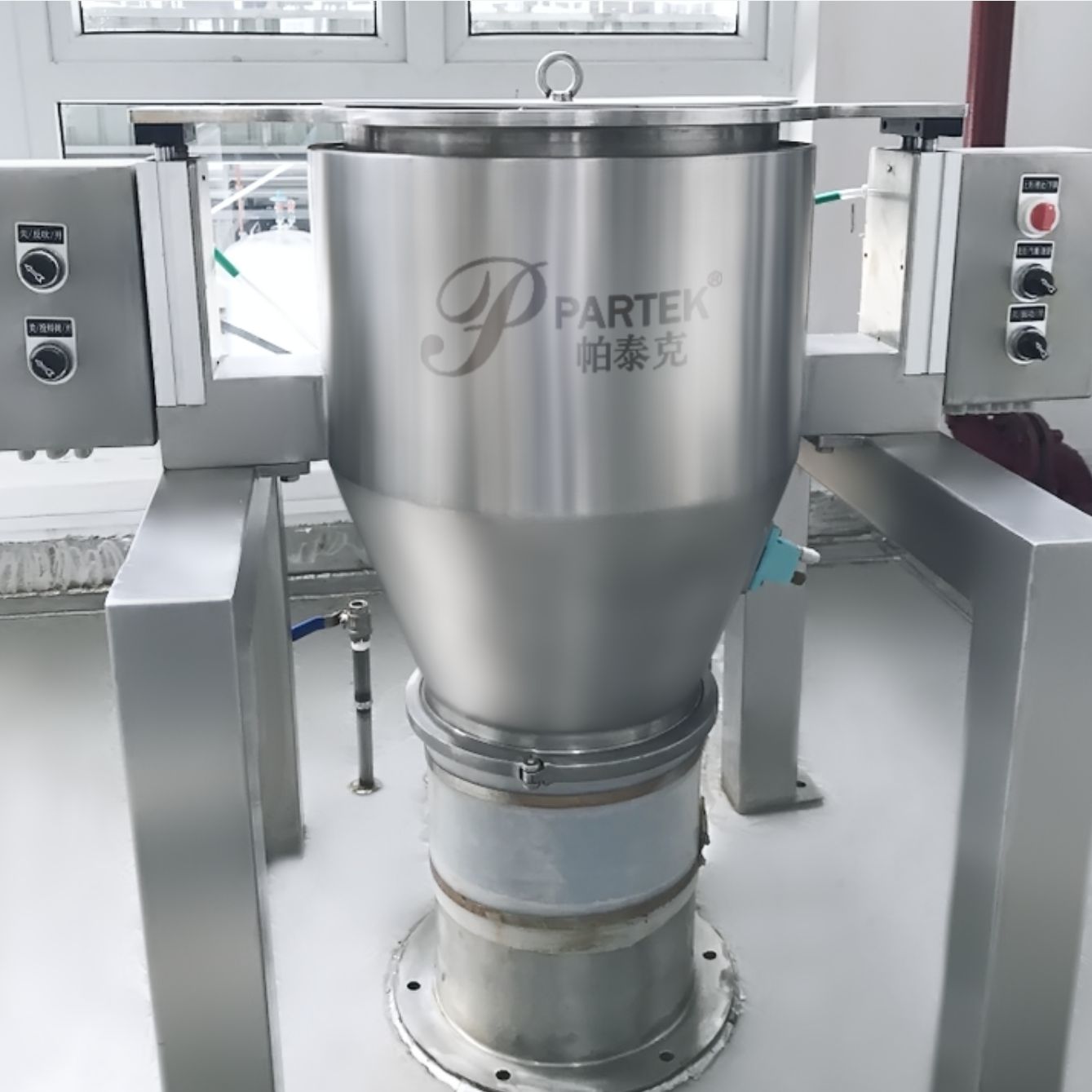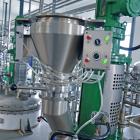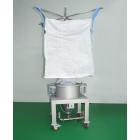



Introduction
The FIBC unloading station positions the FIBC at the material inlet, where an operator manually releases the discharge spout tie. An integrated bag activator (pneumatic massager) promotes material flow, allowing the powder or granular material to discharge by gravity into a buffer hopper, then conveyed by a screw feeder. This system is widely used in pharmaceutical, chemical, and food industries.
Principle
The system consists of a hoisting frame, bag activator (pneumatic massager), pneumatic clamping unit, buffer hopper, weighing screw feeder, and discharge bin. It is designed for semi-automatic unloading of materials from FIBC.
The FIBC is lifted by an electric hoist, and the lifting loops are secured onto a rigid steel frame. The operator controls the hoist to traverse the bag along the guide rail to the discharge position above the inlet.
Once in place, pressing a button raises the pneumatic clamping cylinder. The operator pulls the bag's discharge spout into the clamping ring. Upon pressing the clamping button, the cylinder descends, compressing the sealing ring against the inner clamping ring to create a tight seal around the bag spout.
The operator then releases the discharge spout tie, allowing the material to flow by gravity through the pipeline. To facilitate smooth discharge, especially for poorly flowing materials, a bag activator can be used to loosen compacted product within the bag.
The material falls into the buffer hopper and is then evenly conveyed by the screw feeder into the discharging outlet, and ultimately transferred to the downstream equipment as required.
After discharging is completed, the clamping device is released, and the electric hoist is used to lift and remove the empty bag.
| Lifting State | landing State |
Parameter
|
Discharging Weight |
Ton bag |
|
Hoisting Capacity |
3 T |
|
Pressure |
0.5-0.6 MPa |
|
Temperature |
-20℃-45 ℃ |